Turkey Black Sea Coast is a Delight to Explore
Turkey Black Sea Coast – From the northern end of the Bosphorus just east of Istanbul to the frontier with Georgia, the Black Sea region is a real anomaly, guaranteed to smash any stereotypes you may hold about Turkey. The combination of damp northerly and westerly winds, confronting an almost uninterrupted wall of mountains south of the shore, has created a relentlessly rainy and riotously green realm. That said, while the coastline may have cooler water temperatures and cloudier skies, semi-tropical heat still sets in during July and August. The Black Sea (Karadeniz in Turkish) was – and indeed still is – an important maritime route; the ancient civilizations who ruled the waters left behind castles, churches, monasteries and mosques. Alongside these, the region’s charm lies in its craggy beauty, empty beaches, vibrant seaside towns unspoilt by tourism, and its low-key vibe.
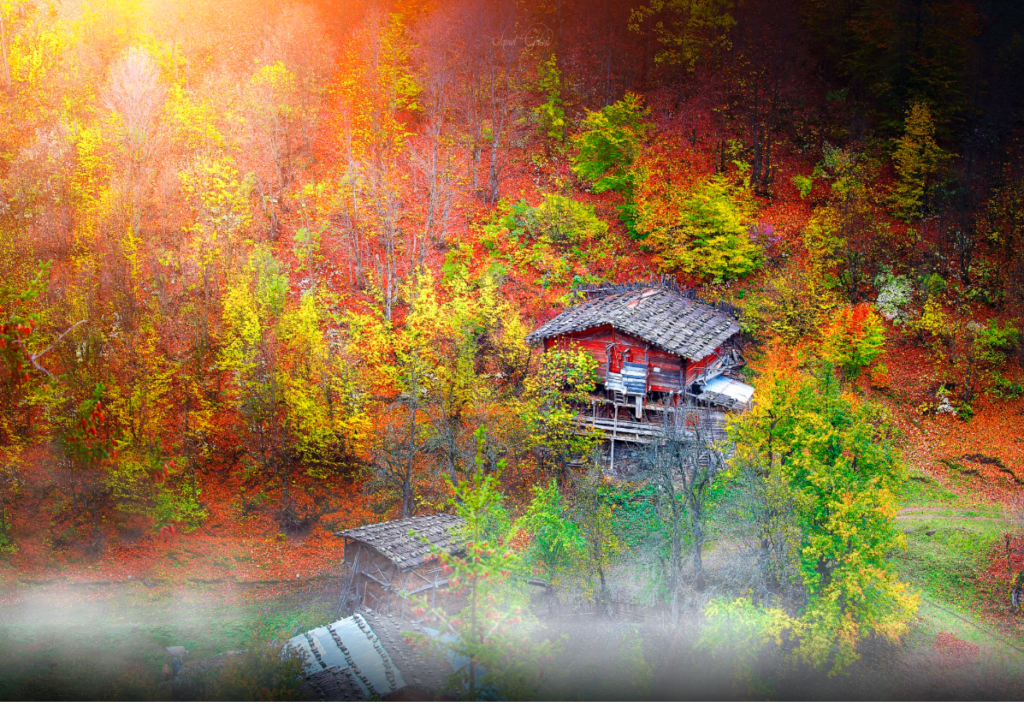
While Turkey Black Sea coast has been the favorite holiday destination of the Turks themselves forever, it’s only in recent years that this marvelous part of the country has come to the attention of foreign visitors. Stretching for nearly 1,000 miles from Istanbul to the border with Georgia, Turkey Black Sea coast is vastly different from the popular hotspots of the Mediterranean, Cappadocia, and the Aegean Sea. Therein lies the particular allure of the region! Fewer crowds, cooler summers, and plenty of rainfall, which in turn is the reason for lush forests, green pastures, and abundant orchards as well as plenty of family-friendly beaches that make for a Turkish experience of a different kind. In some parts around Lake Uzun (Uzungol), you might even think you are in Switzerland.
Divided into a western and an eastern part, the Pontic Mountains (also called the Pontic Alps) just beyond the coastline get higher and more dramatic the closer you come to Georgia. Caves, vibrant port towns, monasteries, and extremely friendly people welcome visitors to spend at least a few days. Of course, they jealously guard their traditions and culture, too, which is why some insider tips are in order.
Although the region’s characterless central portion is dominated by the hulking port of Samsun, the coast west of the strikingly sited town of Sinop, towards the Byzantine/Genoese harbour of Amasra, is filled with attractive villages and deserted beaches. To the east of Samsun are the old mercantile towns of Ünye and Giresun, and the ancient port city of Trabzon (Trebizond), which has more historical attractions than any other destination on the Turkish Black Sea, including the spectacular nearby monastery of Sumela.
Emerging north of Ankara as mere humps, the coastal mountain ranges attain world-class grandeur by the time they reach the Georgian border. Until recently they made land access all but impossible and provided refuge for a complex quilt of ethnic subgroups, pockets of which still exist among the Hemşin valleys and the Kaçkar Mountains. Today these regions provide excellent trekking opportunities and rural retreats among the misty forests, glassy lakes and babbling streams. Black Sea cuisine is strongly influenced by geography and climate. The Black Sea anchovy (hamsi) has a cult-like fan base as far as Istanbul, and the region produces excellent dairy and locally grown hazelnuts, walnuts and cherries. With the exception of the winding and slow western section between Sinop and Amasra, bus and dolmuş links are excellent along the D010 coastal highway.
In this article we will discover “eastern part” of Black Sea region starting from Trabzon.
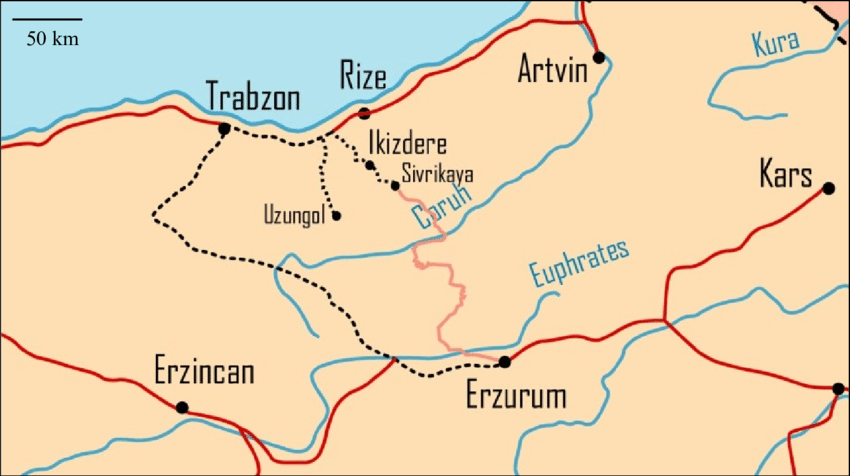
Brief history
The ancient Greeks ventured onto the Black Sea, or as they called it, the Pontos Euxine, at the start of the first millennium BC. They fought with the local “barbarians” and occasionally, as in the semi-legendary tale of Jason and the Argonauts, got the better of them. Between the seventh and fourth centuries BC, the Aegean cities founded numerous colonies. These became the ancestors of virtually every modern Black Sea town, whose names as often as not are Turkifications of their ancient monikers. The region made its first brief appearance on the world stage when a local Pontic king, Mithridates IV Eupator, came close to expelling the Romans from Anatolia.
With the arrival of Christianity, relations between natives and imperial overlords hardly changed at all. Only the Byzantine urban centres by the sea became thoroughly Hellenized. The Byzantine defeat at Manzikert in 1071 (see The arrival of the Turks) initially meant little to the Black Sea, safe behind its wall of mountains; the fall of Constantinople to the Fourth Crusade in 1204 had far greater immediate effects, prompting the Black Sea’s second spell of historical prominence. For two and a half cultured (and ultimately decadent) centuries, the empire-in-exile of the Komnenos dynasty, centred on Trebizond (today’s Trabzon), exercised influence grossly disproportionate to its size.
After Manzikert, Turkish chieftains had begun to encroach on the coast, especially at the gap in the barrier ranges near Sinop and Samsun. The Trapezuntine dynasty even concluded alliances with them, doubtless to act as a counter to the power of the Genoese and Venetians who also set up shop hereabouts. Most of this factionalism came to an end under the Ottomans, though even they entrusted semi-autonomous administration of the Pontic foothills to feudal derebeys (“valley lords”) until early in the nineteenth century. The equilibrium was upset when the Black Sea area entered the history books for the third time, as a theatre of war. Imperial Turkey and Russia clashed four times between 1828 and 1915, and the Tsarist regime gave aid and comfort to various regional separatist movements after 1877. Between 1918 and 1922, Greeks attempting to create a Pontic state fought with guerrillas loyal to Atatürk’s Nationalists. Following the victory of the Republic, the Greek merchant class was expelled, and the Black Sea experienced temporary economic disarray, verging on famine during the 1930s.
Most of the credit for the modern decades of recovery must go to hamsi (the Black Sea anchovy caught here in large numbers during winter) and hazelnuts
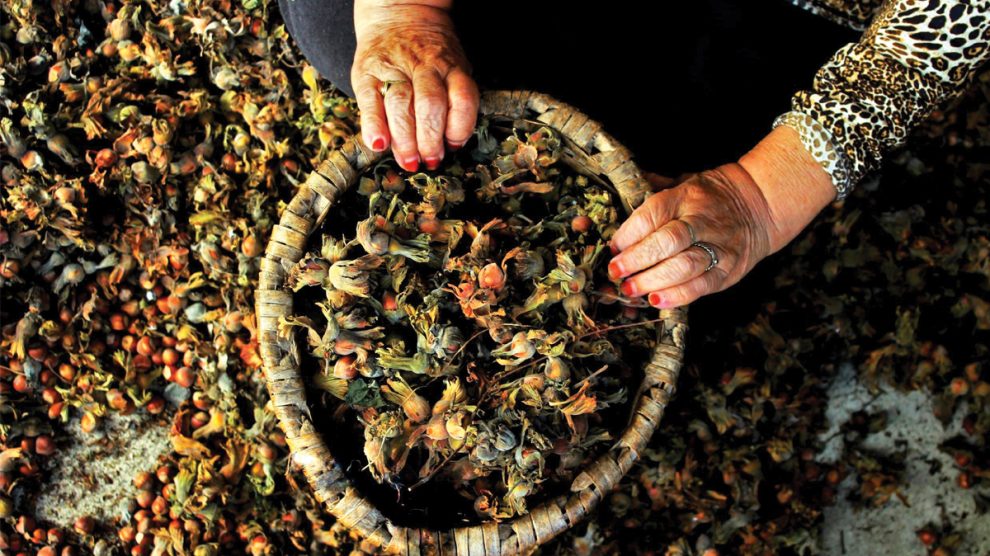
The most visible sign of the post-Soviet era, since Turkey’s eastern border opened up in the early 1990s, is a coastal highway and a further bout of urbanization. The Black Sea and its six bordering countries – Bulgaria and Romania to the west, Ukraine to the north, Russia and Georgia to the east, and Turkey to the south – today is a major trade hub, with a bottleneck exit point through the Bosphorus Strait.
Must-Visit Attractions Along Turkey Black Sea Coast
Turkey Black Sea Coast is a real paradise for nature lovers with its mountains, alpine pastures and serene lakes surrounded by dense forests, not to mention its hidden historic sights. Here are some of the things you definitely need to see when visiting Karadeniz. Turkey Black Sea Coast is a world apart from the rest of the country, with the clusters of villages that speckle its narrow coastline hemmed in by the sea on one side and rolling mountains on the other. Although this region is not usually top on the itineraries of many foreign tourists, it’s a beautiful slice of Turkey, with plenty of attractions and things to do.
The winding road that threads its way along the coast is one of the most scenic in the country, making this region perfect road trip fodder. The star sightseeing attraction is Sumela Monastery, far out to the east, and the trip here along the coast is crammed with pretty harborside hamlets boasting ancient fortifications, empty beaches, and vibrant seaside towns. Find the best places to visit with our list of the top attractions on the Turkey Black Sea Coast:
Trabzon
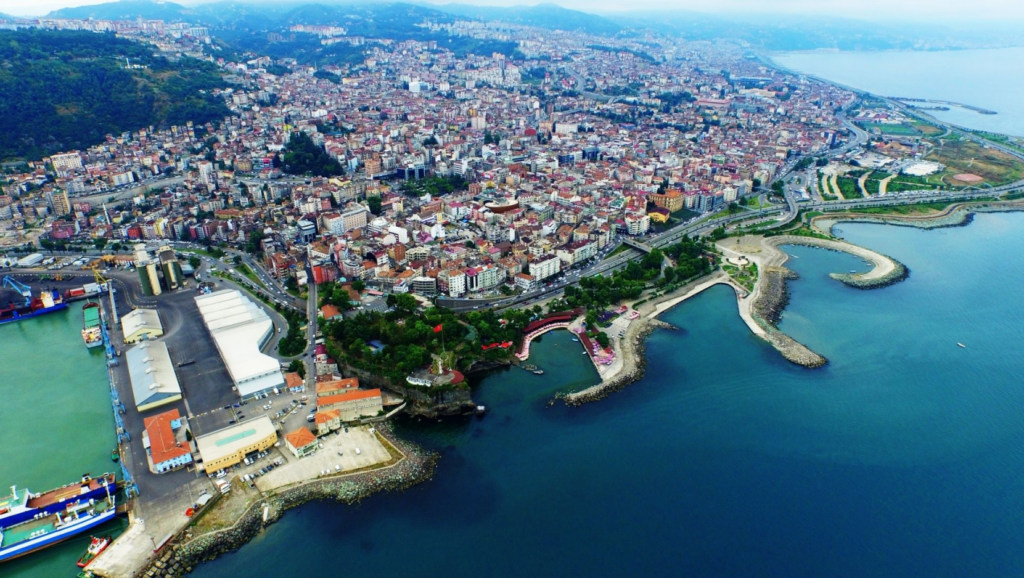
Bustling Trabzon is a large harbor city enclosed by the soaring peaks of the Eastern Pontic Mountains, which run along the coast. It was founded perhaps as early as the 8th century BC by Greek settlers and soon flourished as part of the caravan trade route between Persia and the Mediterranean. The main tourist attraction is the Aya Sofya Museum (Hagia Sophia Church), probably built by Emperor Alexius Comnenus immediately after his arrival in Trabzon from Constantinople (modern Istanbul) in 1204. It was converted into a mosque in Ottoman times and is now a museum. The church follows a cruciform plan, with a nave flanked by aisles and a transept with frescoes. Along the base of the south doorway is a frieze depicting the story of Adam in a style showing a clear Eastern influence. Despite the fact the wall paintings are severely defaced, they are still beautiful.
Sumela Monastery
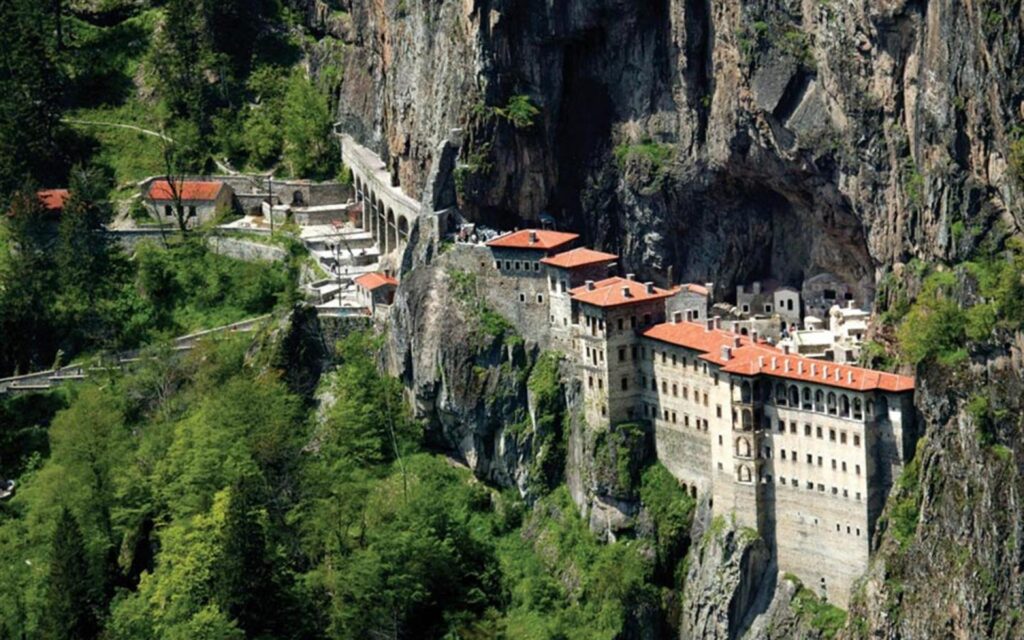
The Sumela Monastery is a Greek Orthodox monastery that’s located within the Pontic Mountains in the Maçka district of Trabzon in Turkey. Dedicated to the Virgin Mary, the monastery is quite an unbelievable sight, nestled deep within a steep cliff at an altitude of around 1,200 meters. Sumela was founded during the reign of Emperor Theodosius I in AD 386 and became famous all around for an icon of the Virgin Mary believed to have been painted by the Apostle Luke. The monastery fell into ruin several times during its existence, but was restored by various emperors, reaching its present form in the 13th century as it became very renowned during the Empire of Trebizond. It continued to enjoy protection under the emperors, as well as by Ottoman Sultan Mehmed II. Abandoned in 1923, due to a forced population exchange between Greece and Turkey, the monks buried the famous icon underneath the floor of Sumela’s St. Barbara chapel, where it was later retrieved in 1930 and taken to the new Panagia Soumela Monastery in Greece. Known as the ‘Sümela Manastırı’ in Turkish, the monastery currently serves as a tourist attraction, but there’s also a renewed and welcomed flow of religious pilgrims from Russia and Greece. The monastery includes several chapels, kitchens, student rooms, a guesthouse, a library and a holy spring. However, the Rock Church is most striking due to the many frescoes depicting biblical scenes from the story of Christ and the Virgin Mary. There are fabulously vibrant (though sadly defaced) frescoes within the main chapel, and the warren of rooms and chapels that make up the rest of the complex give you a good idea of the austerity of religious life in previous centuries. Possibly the biggest highlight of a visit here, though, are the views of the entire monastery, clinging to the rock face, on the winding road up to the entrance. Read more about Sumela Monastery
Rize

Rize is capital of Turkey’s tea-growing region, and every fan of a hot brew should make a stop here. The town itself is a thoroughly modern affair, surrounded by lush green tea plantations. Take a trip to the Tea Garden above town, where you can sip your tea while admiring great views across the rolling hills. As well as being home to a huge range of tea plants, the garden has a collection of subtropical flora. More fine panoramic views are on offer at Rize Castle (Rize Kalesi), which the Genoese built during the medieval era, and there is another relaxing tea garden here. Read more about Turkish Tea Culture
Uzungöl
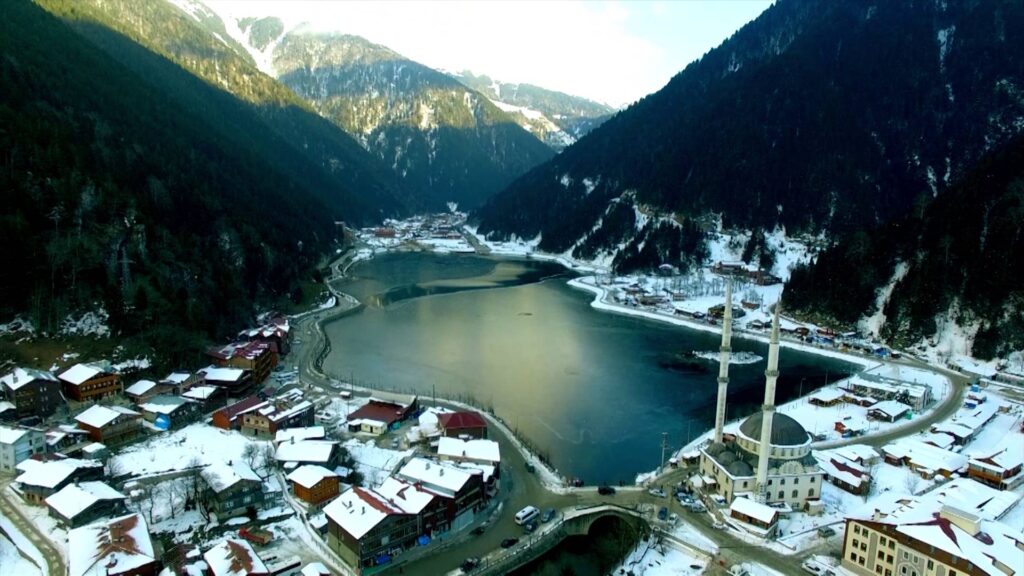
Located around 1090 meters above sea level among the green mountains of the beautiful Black Sea region, Uzungöl is the perfect place to spend quality time amid nature. Whether you want to hike around the many plateaus or feast on some of the village’s famous trout, check out our tips before you go. Known for the large and beautiful lake in its center, the village of Uzungöl (which befittingly translates to ‘Long Lake’) is surrounded by high rising mountains covered in deciduous trees. Around 90km from the city of Trabzon, the picturesque village, its lake, and valley have started to become an attraction for visitors who are looking to get away from city life and really immerse themselves in nature and the village life of Turkey’s Black Sea region. The Uzungöl Lake was formed when a landslide altered the stream-bed into a natural dam and reflects all the colors of the surrounding valleys. Uzungöl almost appears as if its inaccessible because of its location among the mountains and it is exactly this attribute that has made the village so attractive for visitors fleeing their urban routine. The fog, which frequently envelops the area, is also another visual spectacle that makes this place appear more like Switzerland than Turkey. The main activity in Uzungöl is definitely hiking, and the paths to the left and right of the lake are the perfect starting points for serious hiking trips that extend into the forests and into the mountains for amazing views. Apart from exploring the area on foot make sure to also visit the region’s famous Ipsil and Haldizen yaylaları (alpine pastures), which are situated in the Ipsin and Haldizen valleys at around 2000 and 3000 meters above sea level. You’ll also discover a lot of beautiful glacier lakes at these heights, as well as the blossoming flora and fauna of the valley if you’re there in the summer. In the winter, Uzungöl is quite the romantic getaway with a thick layer of snow covering the entire valley.
Ayder Yaylası
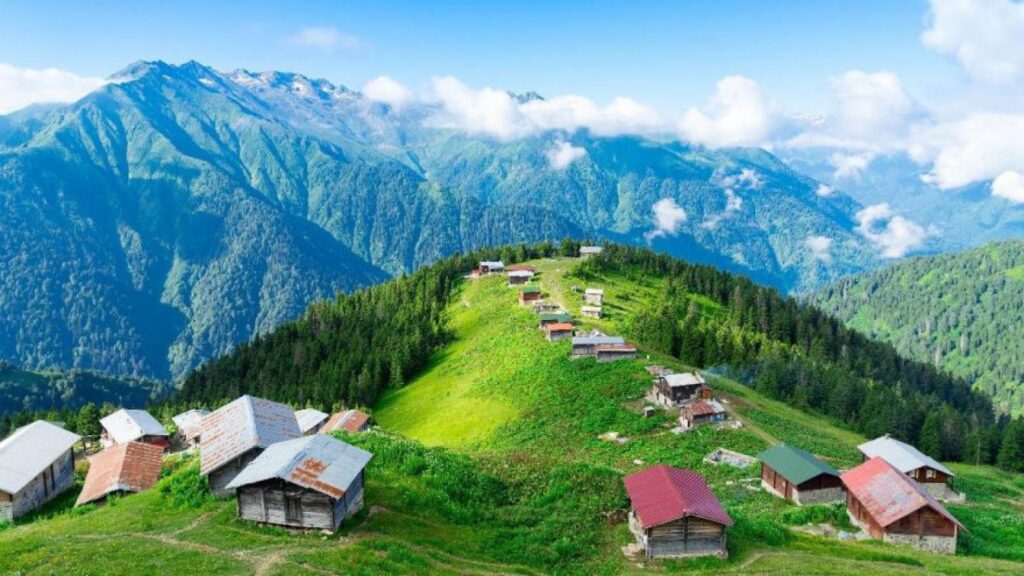
One of Karadeniz’s most popular alpine pastures, Ayder Yaylası is famous for its wooden alpine huts that look out over the deep green valley. It’s definitely a great place to stay if you’re looking to explore the area by foot. One of the most popular alpine pastures belonging to Turkey’s Black Sea region, the Ayder Yaylası is especially attractive due to the many accommodation options. At an altitude of around 1,350 meters, the deep green foliage, the fresh air, and the health boosting hot springs are all reasons to spend some time in heavenly Ayder.
Fırtına Vadisi (Storm Valley)
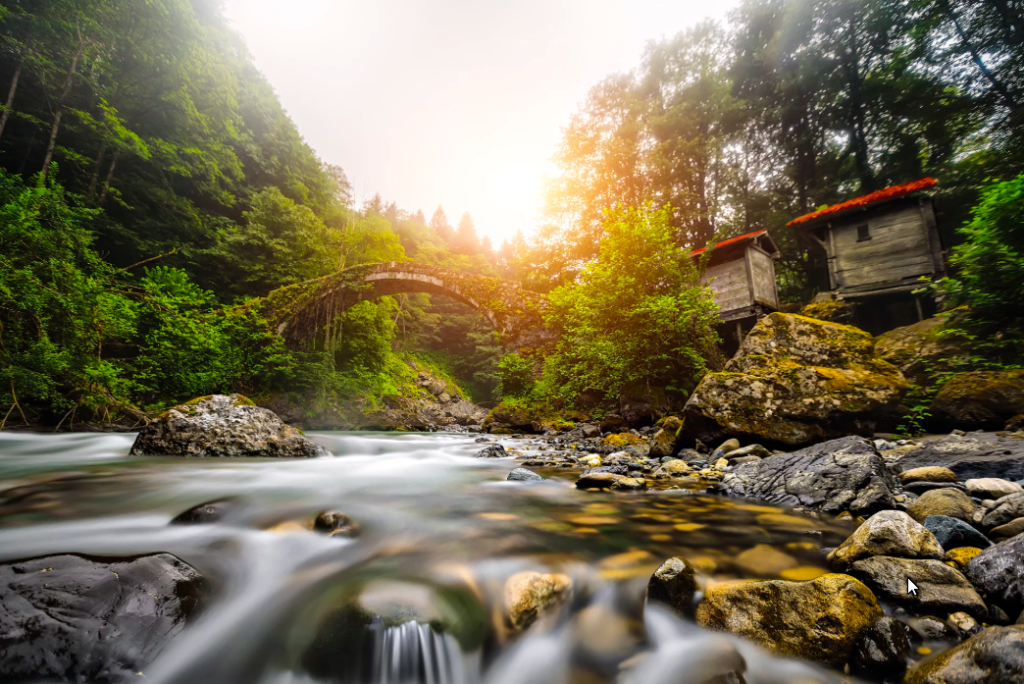
Quite the active river that rushes through the valley, the Fırtına Deresi is also famous for the 20 Ottoman era bridges that can be found all along its aqueous path. The river is also very popular for canoeing and rafting all year round.
Zilkale
A very dramatic medieval castle in the middle of the valley surrounded by the peaks of mountains all around, Zilkale is something out of a fable. Built in the 14th or 15th century, the castle is one of Çamlıhemşim’s most important historic sights.
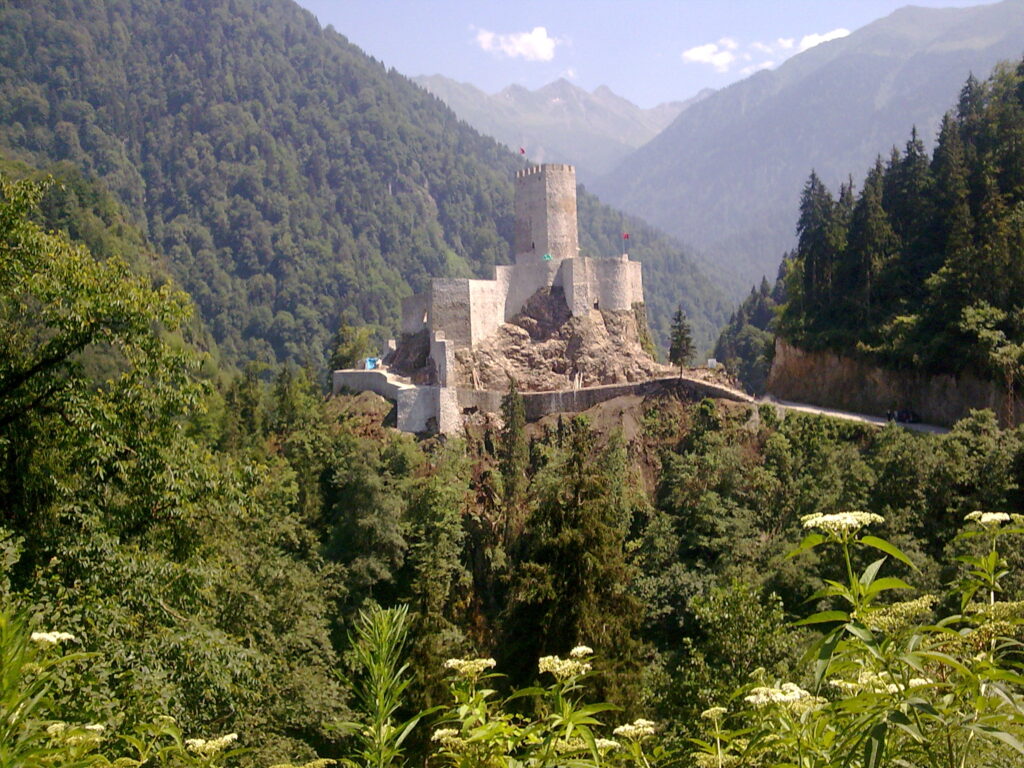
Local Traditional Handicrafts
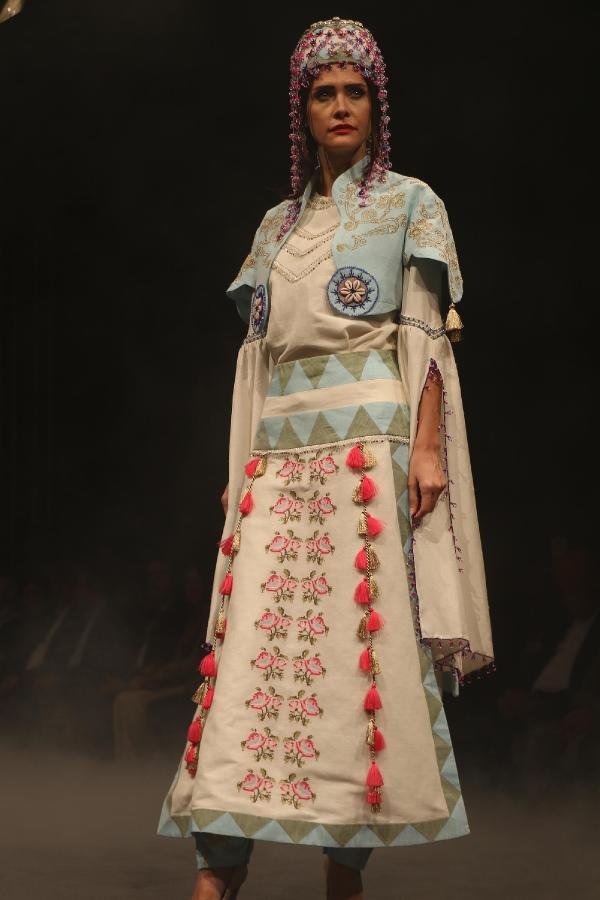
Rize fabric, one of the traditional handicrafts in Anatolia, also known as feretiko, is well-known for its texture of being woven from hemp fibers, its slimness and durability, absorbance of sweat more in comparison to other fabrics and quick drying features. It makes human body feel dry and fresh in warm and humid weather with these characteristics. Being weaved in the handlooms of women in the Ottoman Empire since the 16. Century, this fabric was sent to a wide range of realms, particularly Anatolia, Egypt and the Balkans and also used in the attires of the Ottoman sultans. Handicrafts’ inability to compete with the products of manufacture as a result of the industrial revolution was also seen in feretiko and the production of this handicraft was significantly declined in early 20 Century. Hemp cultivation was greatly reduced due to the start of tea cultivation after the 1930s and its proliferation in the 1960s in Rize province and the production of Rize fabric came to a finishing point. This handicraft, which fell into oblivion, began to gain importance through works conducted after 2003. The continuation of Feretiko production is important for keeping the cultural heritage alive and passing it on to future generations. Being a remarkable touristic product for the region at the same time, this craft has a great potential in the promotion of tourism in the province.
Sürmene Knife

The little town of Sürmene, 40 kilometers east of Trabzon, was known in antiquity as Susarmia or Augustopolis. There is a local hand-made production of knives, in different shapes. Usually around 15-20 cm in length, these local knives are sharp or round pointed, and include engraved ornaments between its handle and sharp side.
Telkari (Wire work)

The origin of wire work stretches in history; it is known that wirework was a popular art in Mesopotamia in 3000 BC, and in Anatolia, Ancient Greek and Rome in 2500 BC. Aſter the 15th century, it began to spread out on the east and southeast Anatolia. With the influence of wirework masters from Dagestan, this art also became popular in Trabzon. Among common designs of wirework in the city are liqueur and coffee sets, tea tray and miniature slippers.
Copper work
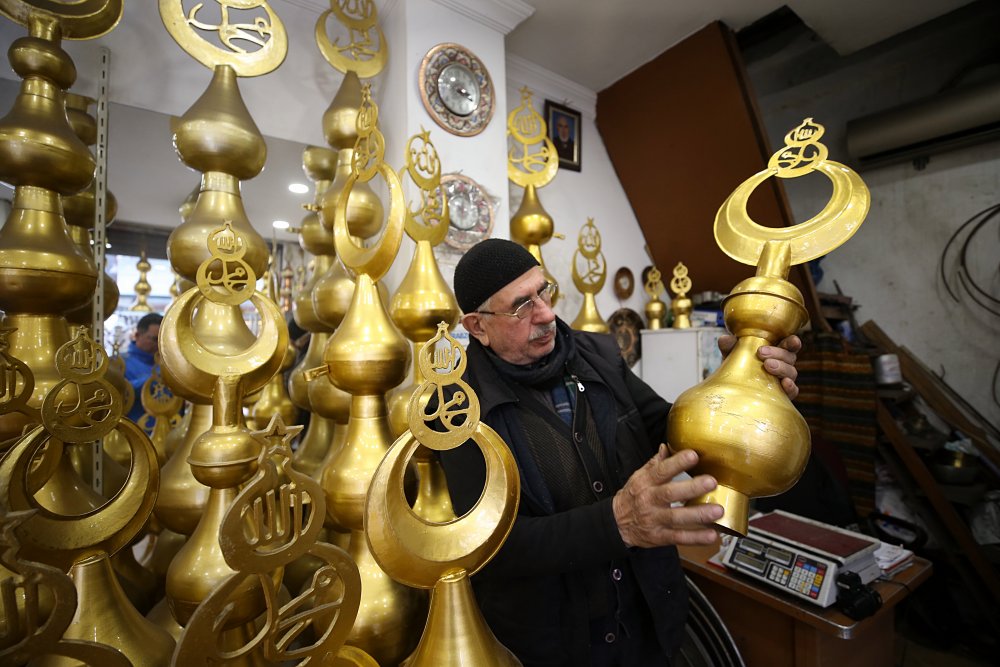
The richest copper mines of Anatolia lie in the Black Sea Region. Copper, bronze and brass became various traditional kitchen utensils aſter processed in the skillful hands of the craſtsmen of Trabzon.
Spoon Made of Boxwood
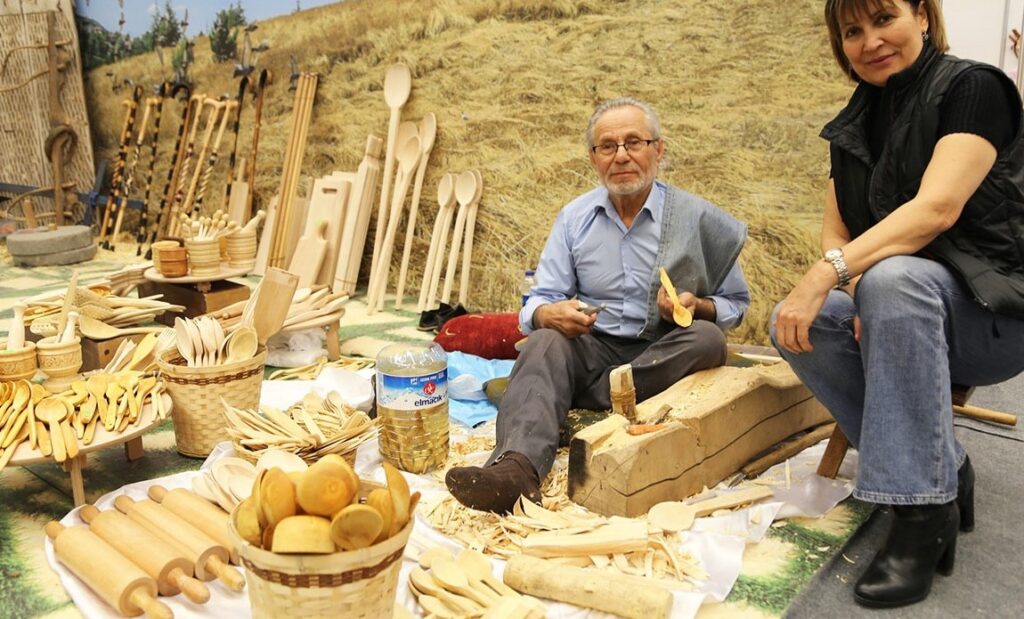
Boxwood is one of the common tree species in Of and Yomra locations of the city. However, Köprübaşı district is famous for its spoons made of boxwood. These spoons vary in size and types such as small, large and ladle ones
Socks
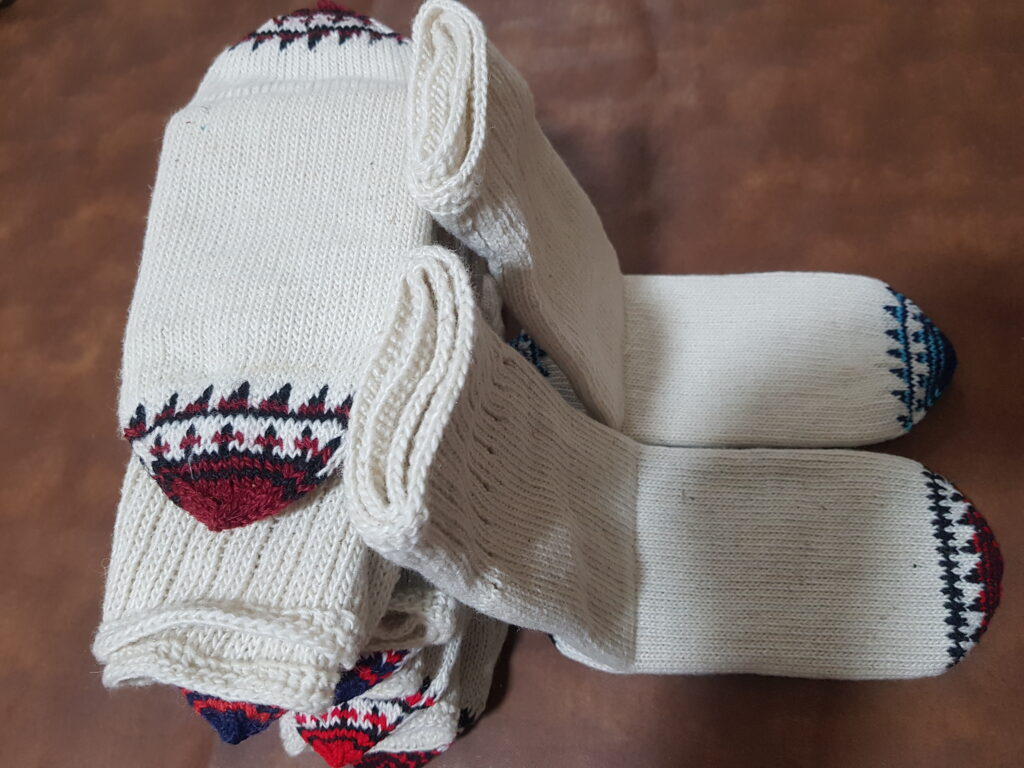
These socks are made from painted or unpainted wools which are naturally white and brown. Featuring triangular motifs on them, hand knitted socks of Trabzon can be used by men, women and kids, also believed to protect against evil’s eye.
Wicker Baskets
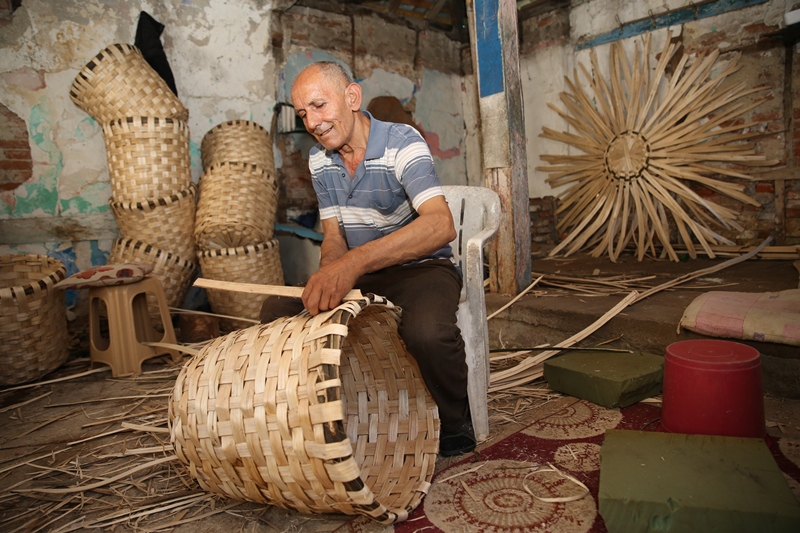
Made of nut branches, wicker baskets are produced in nearly all districts of Trabzon. People living in the Black Sea Region designed various wicker baskets for different purposes such as carrying on back and arm, or just putting down. Flattish basket for bread, back basket, nut basket, and tea basket are some of the wicker basket types produced in the city.










